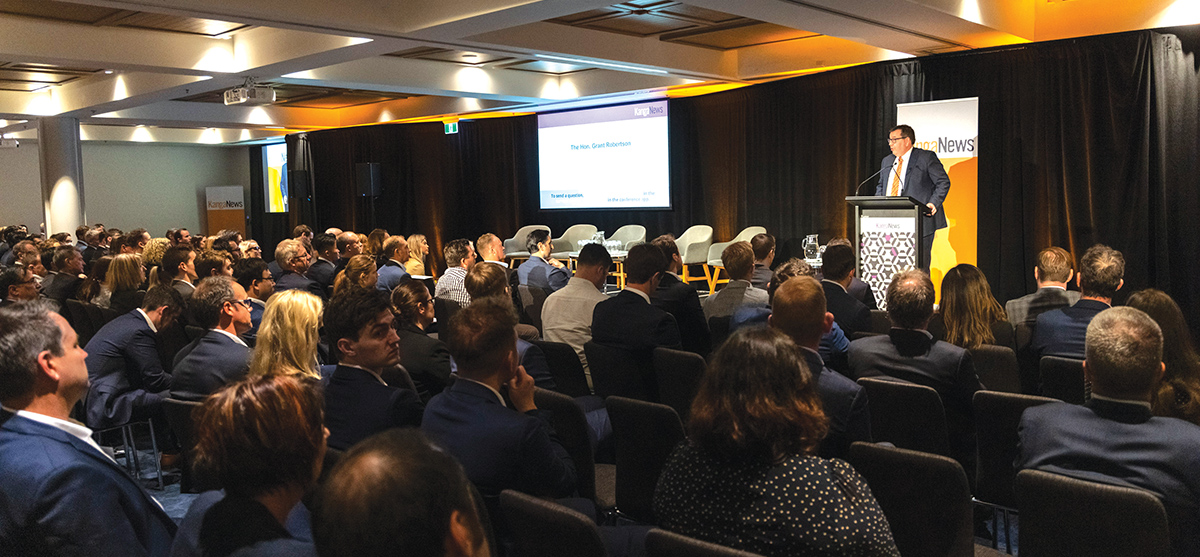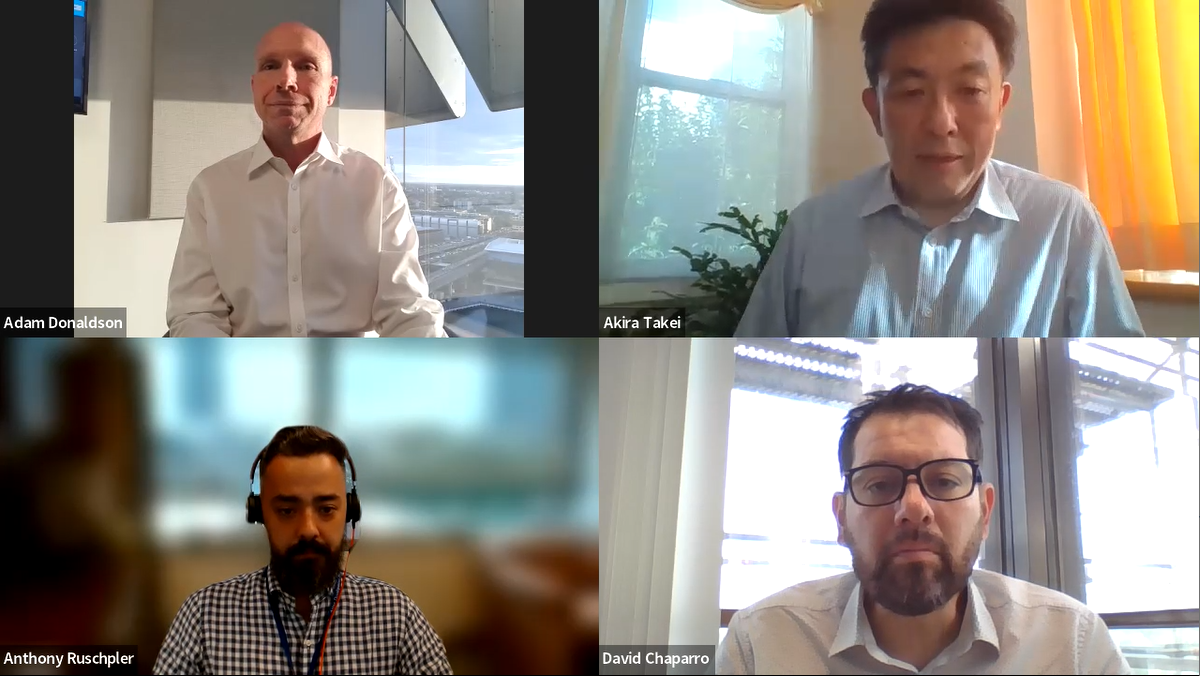
New Zealand stays at the cutting edge of market evolution
The KangaNews New Zealand Debt Capital Market Summit returned to Auckland on 7 September, attracting a record audience as the market gathered after two years of disruption during the pandemic. The New Zealand economy is at the forefront of the global battle against inflation and its capital market is changing shape rapidly, including the all-important factor of sustainable finance. Speakers at the event reflected on the risks and opportunities.
“We wanted to do the sovereign green bond properly and well. We were able to look at green-bond frameworks around the world and draw lessons. A wider sustainability framework is an interesting idea and I imagine in the future we will get there, but we felt that if we did a green bond properly there would be huge benefits to us.”
“We have taken an approach that sets the standards for organisations to tell their story – what have they done about their climate risk or opportunities and the future for their business? What metrics and targets have they set to measure progress and hold themselves accountable? Stakeholders will decide whether these targets are realistic and ambitious enough by comparing within and across sectors and geographies.”
“The quantity of settlement cash has not been important for the stance of monetary policy for a long time – as long as that settlement cash is remunerated at the OCR. It is the stance of monetary policy that sets the financial conditions for the economy, influences bank lending and acts on inflation.”

“Over the last six months, NZGB demand has definitely tilted toward shorter-dated bonds, which is unsurprising in a rising yield environment. In the new fiscal year, however, we have tilted our tender issuance volume toward shorter-dated bonds and we are now seeing higher bid-cover ratios in longer-dated lines. Investors may be starting to see value there.”
“We are facing trading ranges in the bond market that we are not familiar with. One of the metrics we use is the US MOVE [market option volatility estimate] index, which is running about double its 10-year average. The challenge going forward is a risk management one. Volatility creates opportunity, but we must be careful about when to get in and get out.”
“A recent re-evaluation of the strategic asset allocations across our multiasset portfolios, including KiwiSaver, found that traditionally constructed portfolios were deficient in inflation-protected assets. Coupled with the fact that breakeven inflation pricing in New Zealand is structurally cheap to actual inflation, we introduced a strategic allocation to inflation-linked bonds last year.”


“Targets must be credible, material and measurable, and I applaud any organisation that wants to put itself out there publicly. We are engaging with issuers on a wider scale regardless of what KPIs might be, and we apply a sustainability framework across all investments – whether domestic or global.”
“The process of the SLL really helped us focus on what is important and where we could have impact. We kept coming back to the experience and wellbeing of residents. Landing on a meaningful social metric took time but we managed to settle on something everyone was happy with, using third-party verified data.”
“More than 90 per cent of companies in our equity portfolio publish emissions data, which is fantastic. But this brings us to a big problem – the government, which represents more than 60 per cent of our portfolio, does not. The government has mandated corporates to do this but it is not leading by example.”

“Over the last few years, the New Zealand market has changed a lot with global inflation. The RBNZ started hiking rates very early and I think the New Zealand bond market took the first hit, but now it is leading the other regions in performance.”
“ADB has benefited from a strong domestic bid, which has been a key driver of issuance in New Zealand. In addition, our bonds have been labelled as either gender or health and this has been additive to the final volume outcomes we have achieved – though perhaps not the main driver.”
“New Zealand is a well developed country and we have seen the depth of the market improving over the years, but it is still small. The market can be one-sided and getting into positions against the flow can be hard. Having said this, I would say about 20 per cent of our current holdings are in New Zealand dollar.”
“With liquidity relatively poor everywhere and turmoil affecting all sorts of markets, the smaller size of New Zealand’s market may have become less of a factor. Some of the weaker points about the market may not be confined to New Zealand any longer, in other words – and this could be driving decisions of offshore investors to put money to work here.”




“One of the perennial issues we grapple with in this market is supply. Investors are always voicing concern that they cannot get enough diversity in their fixed-income portfolios. We have seen significant evolution over the last few years, but the concern remains and it could be exacerbated by the projected growth in KiwiSaver.”
“We are agnostic when it comes to active or passive management – they form a spectrum that fits within an investor’s belief set. The key point is whether we can find active managers that can consistently outperform the marginal fee charged above a passive option. For the time being, we are still mostly allocating to active management within fixed income and cash.”
“Data comes up in almost every conversation and it is a challenge. The availability of data will improve over time and this will enable better decision-making, but government and industry can help standardise how it is collected and made available. Individual companies, meanwhile, should encourage their supply chains to report metrics that are important to them.”
“We have heard a lot of talk about greenwashing and the NZFMA has issued guidance on ESG instruments that includes elements aimed at ensuring issuers are making disclosure and offering documents clear so they are not misleading investors. There could still be fear of greenwashing accusations among issuers, though.”
“Our investment standard requires a bond to be issued by a borrower already approved by our credit process – we are buying the issuer, not the label. The bond’s structure must have a framework aligned with CBI or ICMA, and the SPO provider must certify alignment. Finally, we want an experienced, ideally independent, entity to provide post-issuance assurance.”

“We are hearing about stress in the mortgage market but we are not seeing it just yet: the performance of our book is surprising us. Most of the conversations we are having with borrowers associated with increased rates are on prioritising budgets and changing spending behaviours rather than any kind of ongoing pain at a core servicing level.”
“No sector is currently showing clear signs of stress, but rate rises and cost-of-living pressures mean some borrowers will have issues, particularly toward the back end of the year and early 2023. We are always worried about first homeowners and less seasoned loans. Self-employed borrowers can sometimes be early indicators of stress, too.”
“Our debt capital market guidelines might be helpful for developing or enhancing internal checklists and to educate interested parties in organisations, such as non-finance team members, executives and board members. A recurring theme within the guidelines is the importance of timely and accurate disclosures, and good information practices and record keeping.”



HIGH-GRADE ISSUERS YEARBOOK 2023
The ultimate guide to Australian and New Zealand government-sector borrowers.

nonbank Yearbook 2023
KangaNews's eighth annual guide to the business and funding trends in Australia's nonbank financial-institution sector.

WOMEN IN CAPITAL MARKETS Yearbook 2023
KangaNews's annual yearbook amplifying female voices in the Australian capital market.

SSA Yearbook 2023
The annual guide to the world's most significant supranational, sovereign and agency sector issuers.















